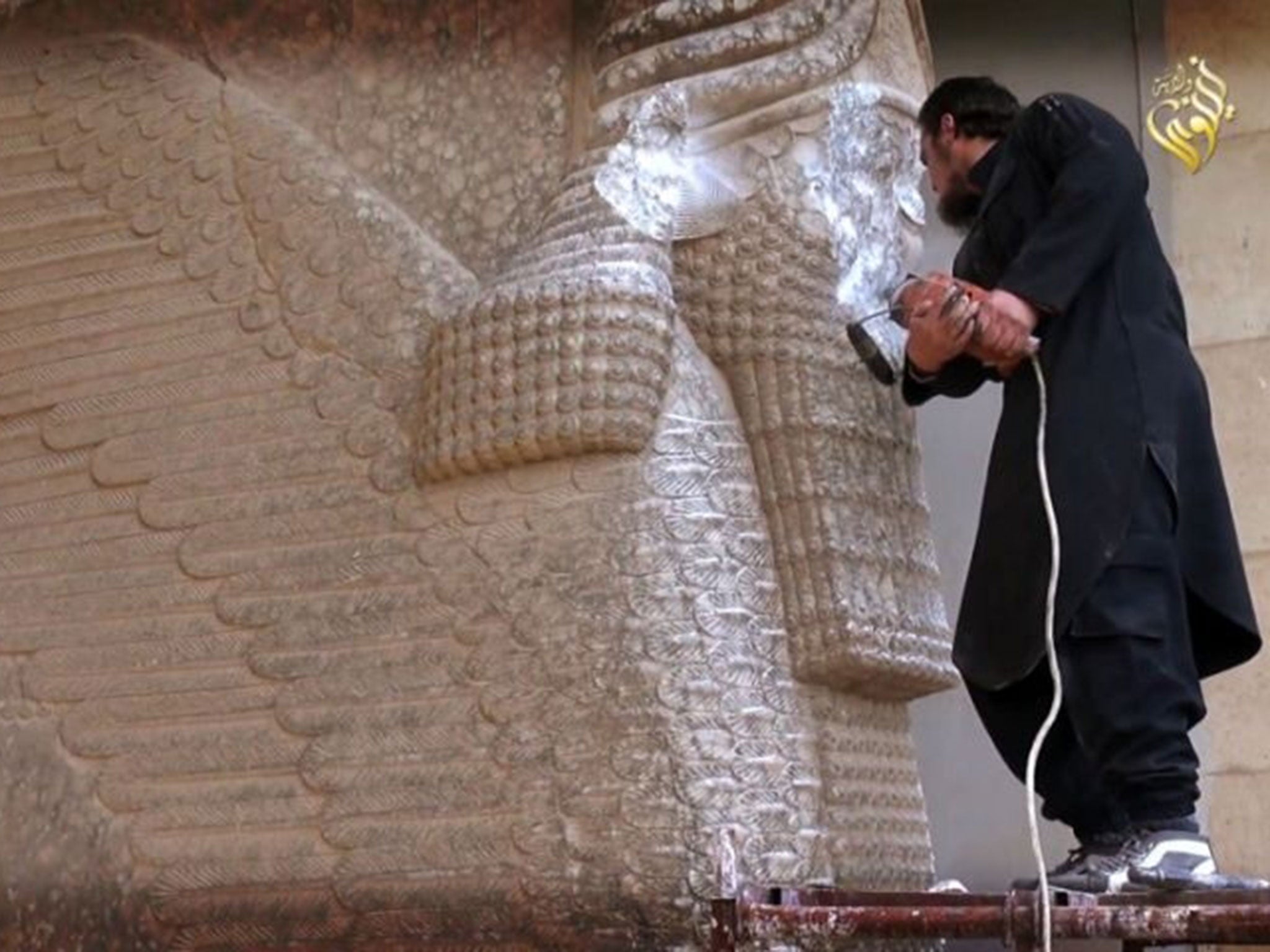Isis in Iraq: Video footage shows militants 'destroying ancient artefacts' in Mosul
The video comes after it was revealed that Isis has burned over 100,000 ancient books and manuscripts

Isis followers have released a propaganda video showing sledge-hammer wielding militants destroying artefacts in Iraq’s northern city of Mosul, in another example of the group's attempt to wipe out what it deems to be heretic.
Armed with hammers and drills in the Mosul Museum, the five-minute clip shows Isis members desecrate several large statues which are hundreds of years old.
The video, which has not been verified but appears to be genuine, then shows a black-clad man at a nearby archaeological site inside Mosul, drilling through and destroying a winged-bull Assyrian protective deity that dates back to the 7th-century BC.
The vandalism comes amid a campaign by Isis to eliminate what they view as idolatrous, which has involved the destruction of a number of shrines, including at Muslim holy sites.

The group is also believed to have sold ancient artefacts on the black market in order to finance the so-called Islamic State, which stretches over Iraq and Syria.
Mosul, Iraq's second-largest city and the surrounding Nineveh province fell to the militants last June.
Fears for artefacts have been stoked by the fact that Isis controls nearly 1,800 of Iraq's 12,000 registered archaeological sites.
The video, shared on social media accounts affiliated with Isis, comes after reports yesterday that the militants destroyed thousands of ancient books and manuscripts, as the group delivered a further blow to Iraq's cultural heritage.
A professor at the Archaeology College in Mosul confirmed to the Associated Press that the two sites depicted in the video are the city museum and a site known as Nirgal Gate, one of several gates to the capital of the Assyrian Empire, Ninevah.
“I'm totally shocked,” Amir al-Jumaili told the AP over the phone from outside of Mosul. “It's a catastrophe. With the destruction of these artefacts, we can no longer be proud of Mosul's civilization.”
He said that very few of the museum pieces are not genuine.
Among the most important sites under the militants' control are four ancient cities - Ninevah, Kalhu, Dur Sharrukin and Ashur - which were at different times the capital of the mighty Assyrian Empire.
An Isis militant pushing a statue inside the Mosul Museum (AFP/OH/Isis Niniveh)
Read more: Who are Isis? The Islamist militant group explained
Three men arrested in US for 'trying to join Isis terror group'
IT worker 'travels to Syria to fight against Isis'
The video, shared on social media accounts affiliated with Isis, comes after reports yesterday that the militants destroyed thousands of ancient books and manuscripts, as the group delivered a further blow to Iraq's cultural heritage.
In January, Isis militants ransacked the Central Library of Mosul, smashing the locks and taking around 2,000 books - leaving only Islamic texts.
Days later, militants broke into University of Mosul's library where they set fire to hundreds of books on science and culture, destroying them in front of students.
The day after Baghdad fell to US troops in April 2003, looters burst into the Iraqi National Museum in the Iraqi capital, making off with scores of priceless artefacts and leaving the floor littered with shattered pottery.
The US was widely criticised at the time for failing to protect the site.
Additional reporting by PA
Join our commenting forum
Join thought-provoking conversations, follow other Independent readers and see their replies
Comments